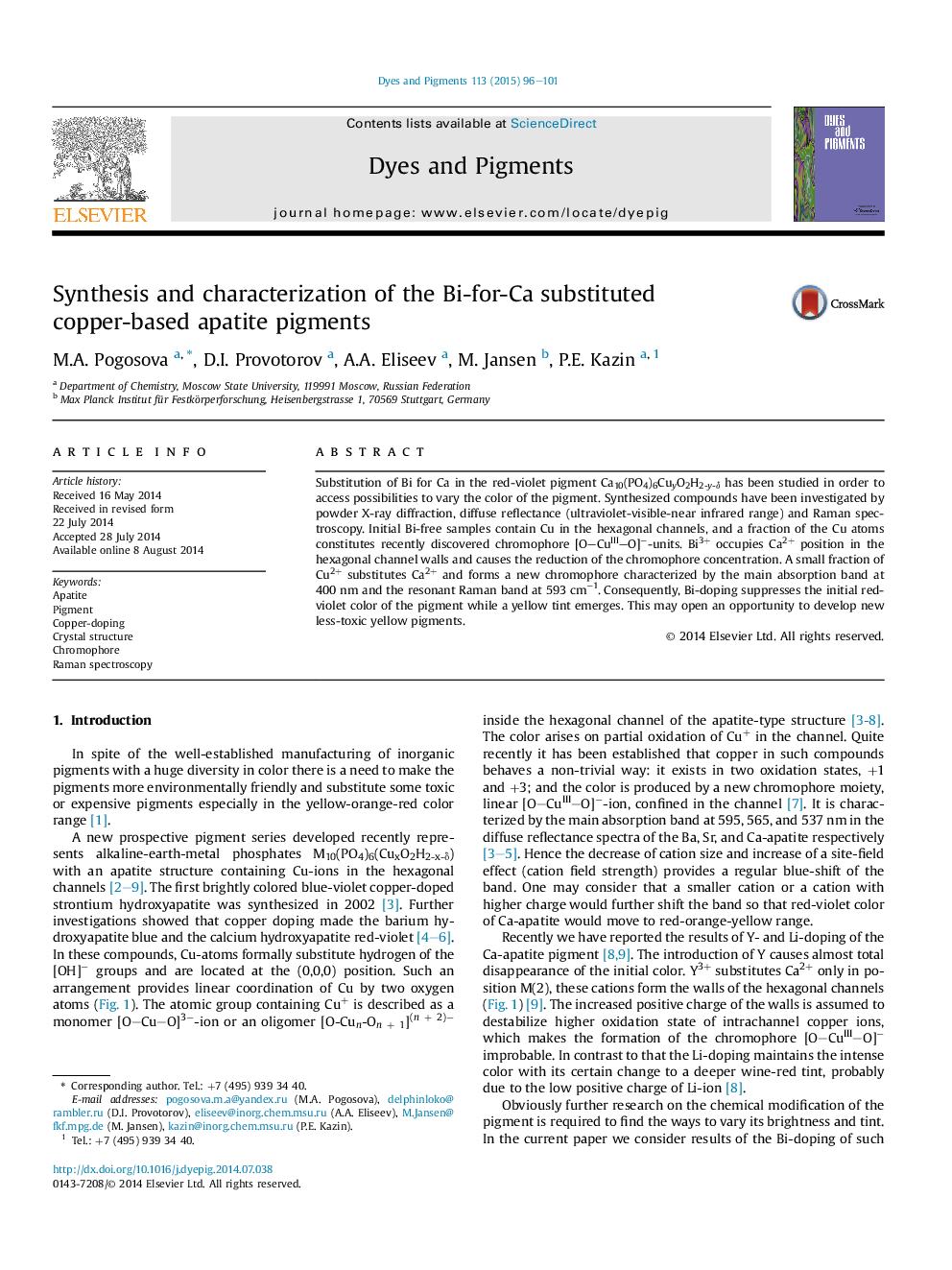| Article ID | Journal | Published Year | Pages | File Type |
|---|---|---|---|---|
| 6600093 | Dyes and Pigments | 2015 | 6 Pages |
Abstract
Substitution of Bi for Ca in the red-violet pigment Ca10(PO4)6CuyO2H2-y-δ has been studied in order to access possibilities to vary the color of the pigment. Synthesized compounds have been investigated by powder X-ray diffraction, diffuse reflectance (ultraviolet-visible-near infrared range) and Raman spectroscopy. Initial Bi-free samples contain Cu in the hexagonal channels, and a fraction of the Cu atoms constitutes recently discovered chromophore [O-CuIII-O]â-units. Bi3+ occupies Ca2+ position in the hexagonal channel walls and causes the reduction of the chromophore concentration. A small fraction of Cu2+ substitutes Ca2+ and forms a new chromophore characterized by the main absorption band at 400 nm and the resonant Raman band at 593 cmâ1. Consequently, Bi-doping suppresses the initial red-violet color of the pigment while a yellow tint emerges. This may open an opportunity to develop new less-toxic yellow pigments.
Related Topics
Physical Sciences and Engineering
Chemical Engineering
Chemical Engineering (General)
Authors
M.A. Pogosova, D.I. Provotorov, A.A. Eliseev, M. Jansen, P.E. Kazin,
